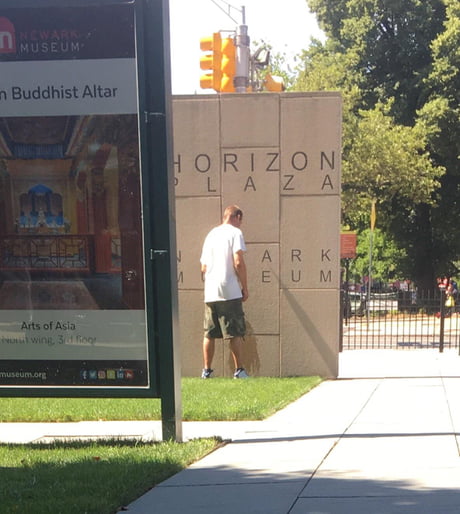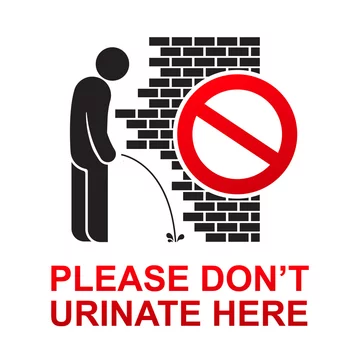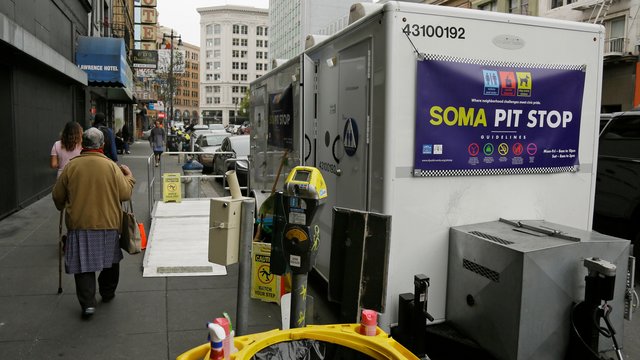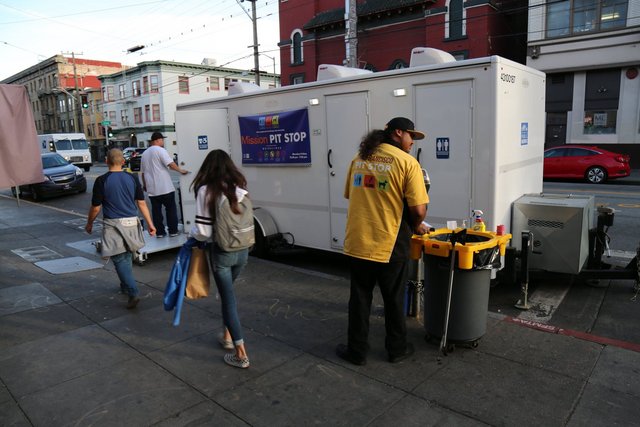signalmankenneth
Verified User
I notice if you go into a lot of businesses nowadays, you see a sign no public restrooms?!!
When a visiting friend asked if I wanted to go on a run in Philadelphia, I did a lot of planning. Not just our route, but where to go to the bathroom. It did not go well.
I took the rapid-transit PATCO Speedline, which doesn’t have bathrooms on trains. The station I left from in Southern New Jersey didn’t have one either, nor did the one where I arrived in Philadelphia. When I arrived at my friend’s hotel, the lobby’s bathrooms were locked.
Fortunately, I was able to follow a woman with a pass code into the bathroom. But that was a matter of luck. Relying on whims of fate was my only option because the United States — and much of the world — has a public bathroom problem.
On average, the United States has only eight public toilets per 100,000 people, according to the Public Toilet Index, a 2021 report by the British company QS Bathrooms Supplies. That’s far behind Iceland, the country with the highest density of public bathrooms: 56 per 100,000 people. That number drops to four per 100,000 in New York City. Madison, Wisconsin, led the way for U.S. cities, with 35 per 100,000.
It wasn’t always this way. In the 18th century, before indoor plumbing, bathrooms were common and generally communal, said Debbie Miller, a museum curator at Independence National Historical Park. In Philadelphia, one such octagonal outdoor toilet was located in a public garden behind what’s now known as Independence Hall. “You could have shared the privy with George Washington,” she said.
The acceptance of public and shared bathrooms shifted during the Victorian era, Miller said, when bodily functions became more taboo. The temperance movement to limit alcohol consumption led cities to build public restrooms in the late 1800s and early 1900s: The thinking went that men wouldn’t need to enter a bar to use the bathroom.
In the 1930s, investment through the Works Progress Administration and Civil Works Administration added more than 2 million latrines in parks, on public lands and in rural areas, as well as “comfort stations” in cities, including in Central Park.
But as city budgets dried up in the 1970s, so did resources for maintenance. Movements arose to end the practice of paid toilets, which was seen as both sexist (urinals were often free to use but stalls were not) and classist. Cities responded by removing public toilets altogether.
Bathrooms are “challenging spaces because they end up being, not infrequently, the places where people get needs met that they can’t meet anywhere else,” such as sex work, drug use or sleeping, said Lezlie Lowe, the author of “No Place to Go: How Public Toilets Fail Our Private Needs.” “All of these are social concerns that have nothing to do with bathrooms, but because of the nature of those spaces, bathrooms end up being used for people to meet their needs, whether it’s dependency or desperation.”
As public restrooms closed, establishments such as coffee shops, museums, libraries and department stores — which are generally open only during certain hours — had to become gatekeepers of restroom access.
https://www.yahoo.com/news/why-public-restrooms-still-rare-183045239.html

Old boy taking a leak on a museum sign

When a visiting friend asked if I wanted to go on a run in Philadelphia, I did a lot of planning. Not just our route, but where to go to the bathroom. It did not go well.
I took the rapid-transit PATCO Speedline, which doesn’t have bathrooms on trains. The station I left from in Southern New Jersey didn’t have one either, nor did the one where I arrived in Philadelphia. When I arrived at my friend’s hotel, the lobby’s bathrooms were locked.
Fortunately, I was able to follow a woman with a pass code into the bathroom. But that was a matter of luck. Relying on whims of fate was my only option because the United States — and much of the world — has a public bathroom problem.
On average, the United States has only eight public toilets per 100,000 people, according to the Public Toilet Index, a 2021 report by the British company QS Bathrooms Supplies. That’s far behind Iceland, the country with the highest density of public bathrooms: 56 per 100,000 people. That number drops to four per 100,000 in New York City. Madison, Wisconsin, led the way for U.S. cities, with 35 per 100,000.
It wasn’t always this way. In the 18th century, before indoor plumbing, bathrooms were common and generally communal, said Debbie Miller, a museum curator at Independence National Historical Park. In Philadelphia, one such octagonal outdoor toilet was located in a public garden behind what’s now known as Independence Hall. “You could have shared the privy with George Washington,” she said.
The acceptance of public and shared bathrooms shifted during the Victorian era, Miller said, when bodily functions became more taboo. The temperance movement to limit alcohol consumption led cities to build public restrooms in the late 1800s and early 1900s: The thinking went that men wouldn’t need to enter a bar to use the bathroom.
In the 1930s, investment through the Works Progress Administration and Civil Works Administration added more than 2 million latrines in parks, on public lands and in rural areas, as well as “comfort stations” in cities, including in Central Park.
But as city budgets dried up in the 1970s, so did resources for maintenance. Movements arose to end the practice of paid toilets, which was seen as both sexist (urinals were often free to use but stalls were not) and classist. Cities responded by removing public toilets altogether.
Bathrooms are “challenging spaces because they end up being, not infrequently, the places where people get needs met that they can’t meet anywhere else,” such as sex work, drug use or sleeping, said Lezlie Lowe, the author of “No Place to Go: How Public Toilets Fail Our Private Needs.” “All of these are social concerns that have nothing to do with bathrooms, but because of the nature of those spaces, bathrooms end up being used for people to meet their needs, whether it’s dependency or desperation.”
As public restrooms closed, establishments such as coffee shops, museums, libraries and department stores — which are generally open only during certain hours — had to become gatekeepers of restroom access.
https://www.yahoo.com/news/why-public-restrooms-still-rare-183045239.html

Old boy taking a leak on a museum sign




